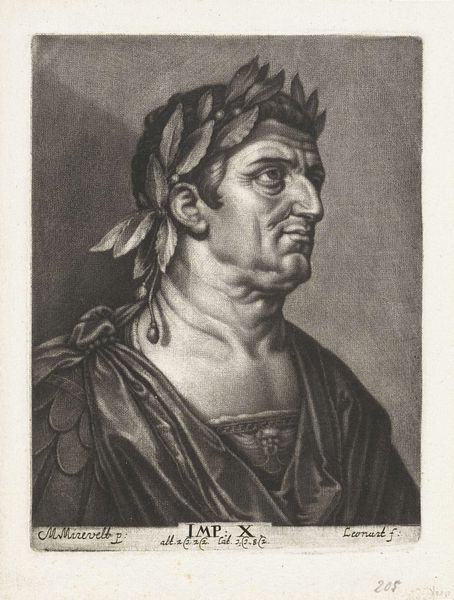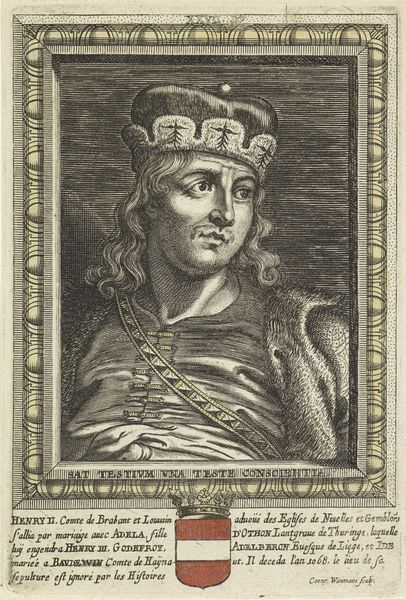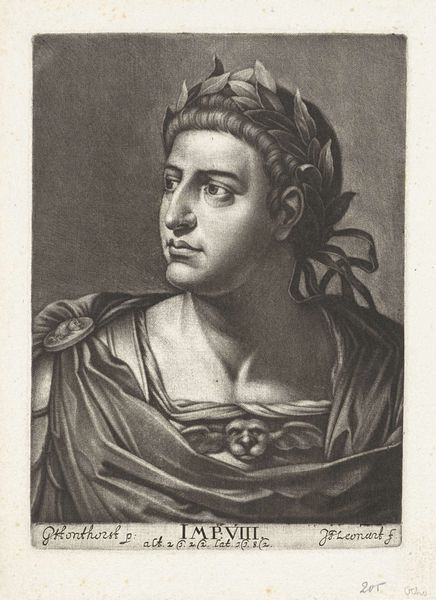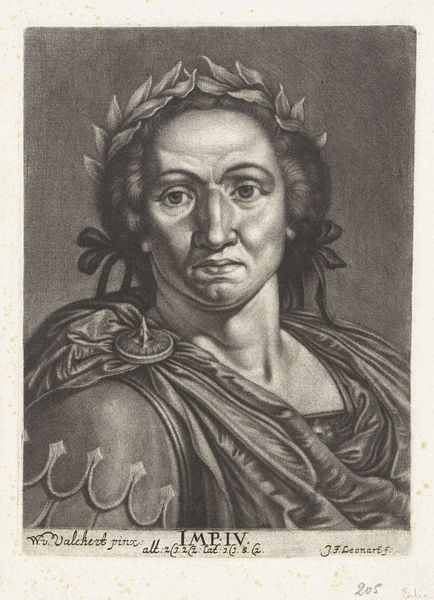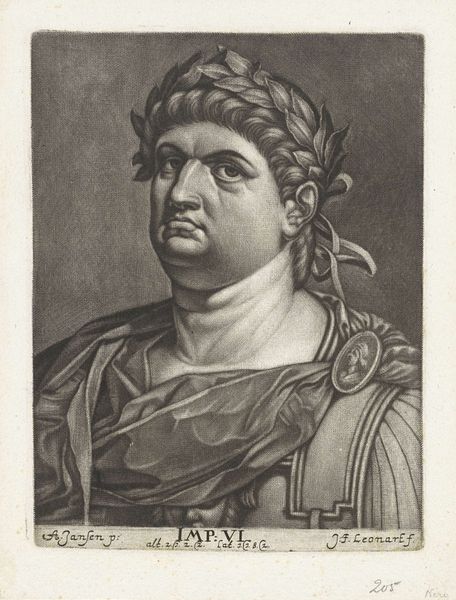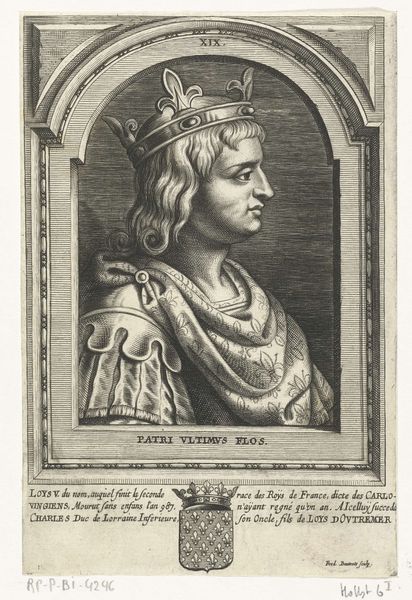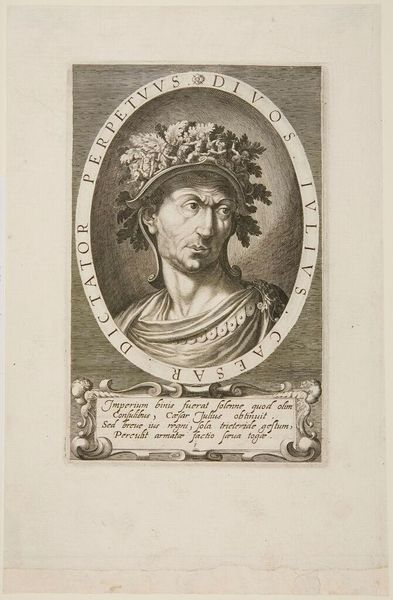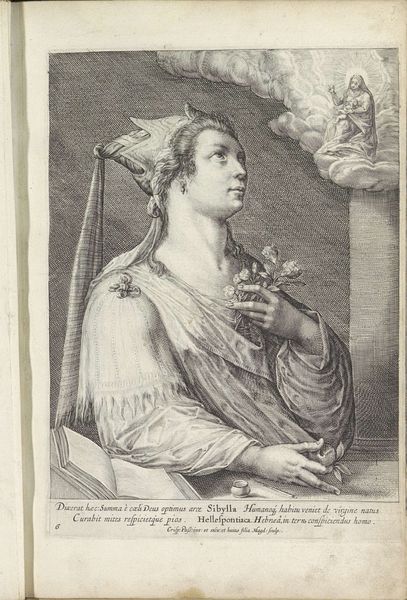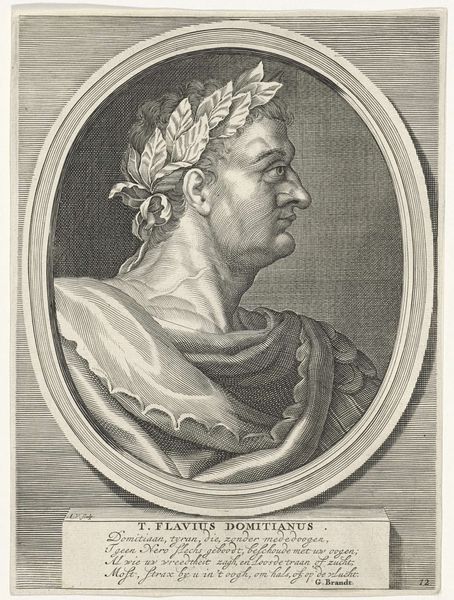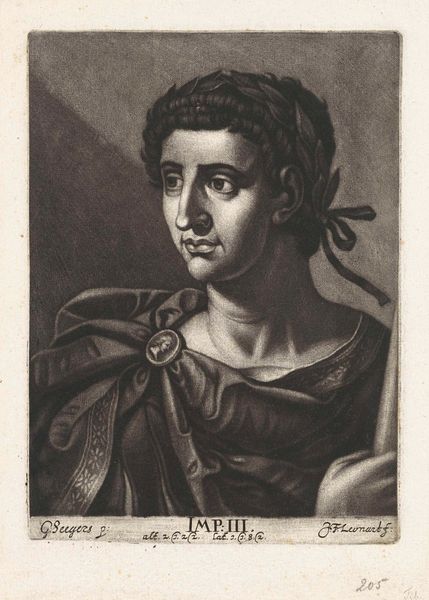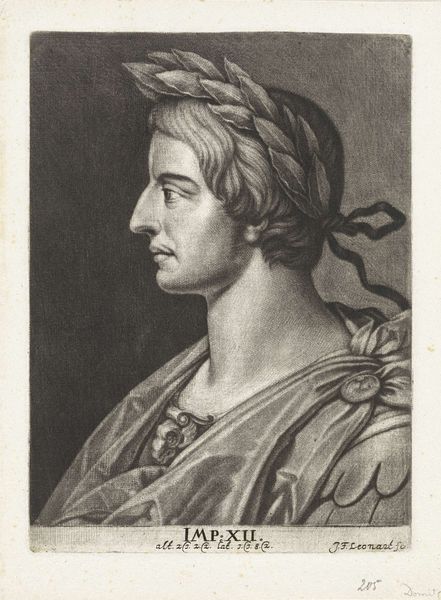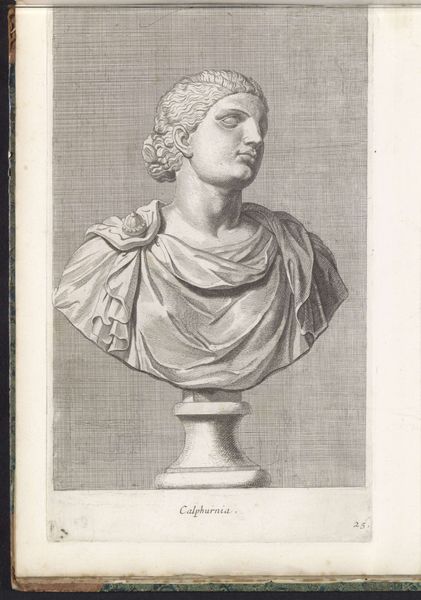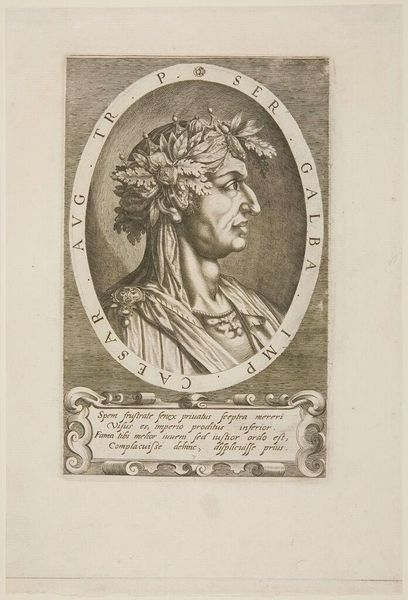
engraving
#
portrait
#
light pencil work
#
baroque
#
ancient-mediterranean
#
limited contrast and shading
#
history-painting
#
engraving
#
realism
Dimensions: height 172 mm, width 129 mm
Copyright: Rijks Museum: Open Domain
Editor: This is Johann Friedrich Leonard’s "Portret van Augustus, keizer van het Romeinse Rijk," an engraving from sometime between 1643 and 1680. It has a strange, haunting quality, especially the subject's intense stare. What aspects of its historical context should we consider when interpreting it? Curator: The image exists as a political artefact. Though created long after Augustus’s reign, it's essential to consider what the act of portraying a Roman emperor signified in 17th-century Europe. What kind of authority did Roman history lend to rulers and institutions of that time? Editor: So, it’s not just about historical accuracy, but also about contemporary power? Curator: Exactly! Consider who would commission such a portrait. Monarchs? Statesmen? What message are they trying to convey by associating themselves with Augustus, a figure known for establishing Pax Romana and consolidating imperial power? Think about the role of imagery in constructing legitimacy. Editor: So, displaying an image of Augustus might suggest a desire for stability or even a claim to similar imperial authority? Curator: Precisely. Moreover, the artistic style, the realism mixed with Baroque elements, contributes. What does it mean to portray Augustus with such detail, making him seem both ancient and present? This isn’t just a record; it’s an interpretation. Editor: It makes you wonder about the intended audience, too. Who would have seen this, and what effect would it have on them? Curator: A vital question! Was it meant for a scholarly elite, a broader public, or perhaps even as a diplomatic gift? The distribution and reception of the image are as important as its creation. Ultimately, this is a tool intended to portray authority and communicate ideas about governance through its representation of history. Editor: That reframes my entire perspective on it. Thanks! I realize now that art acts a social actor itself, with clear intent to make meaning.
Comments
No comments
Be the first to comment and join the conversation on the ultimate creative platform.
